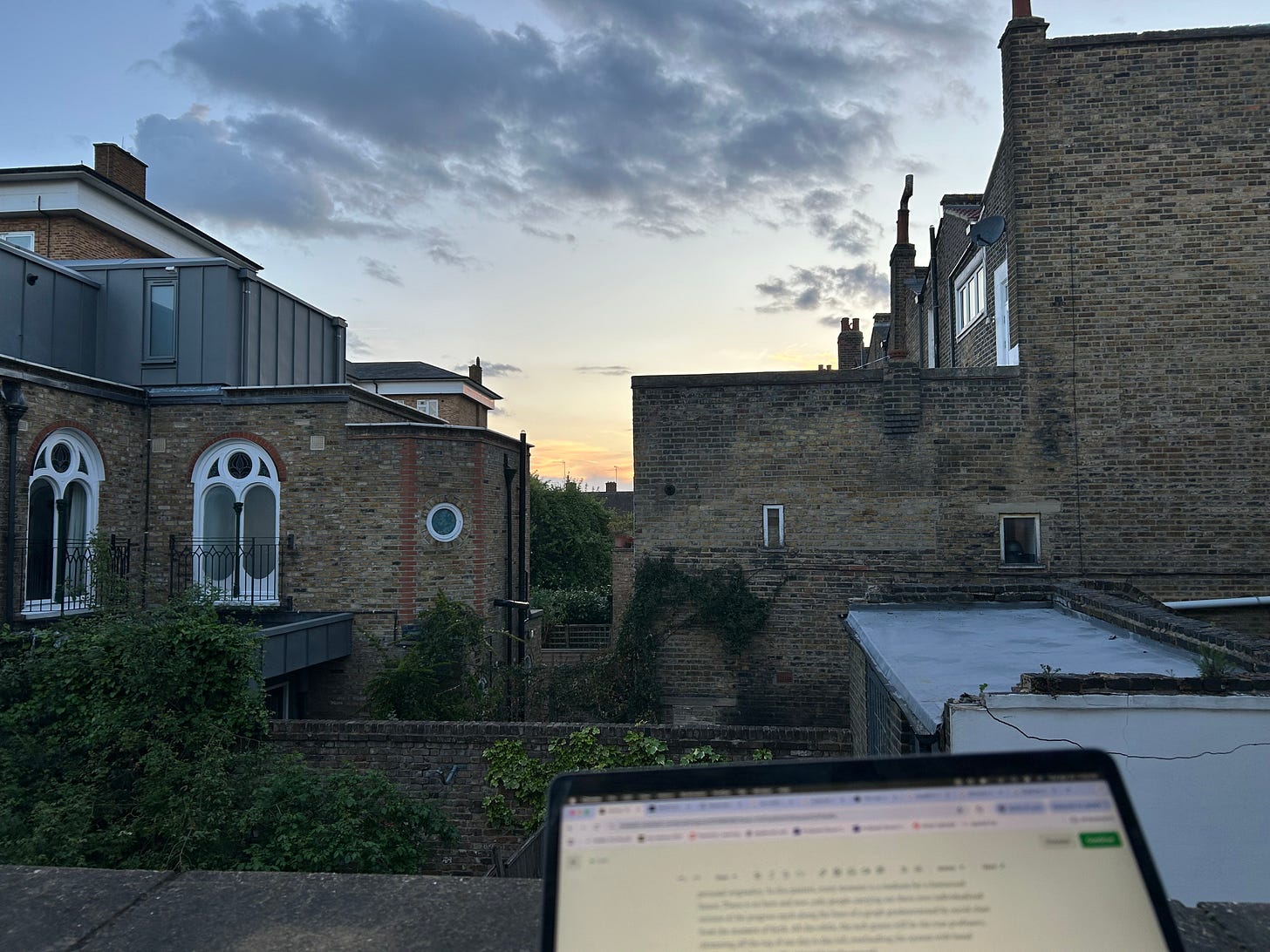“it was as if the Chums, who, out on adventures past, had often witnessed the vast herds of cattle adrift in ever-changing cloudlike patterns across the Western plains, here saw that unshaped freedom being rationalized into movement only in straight lines and at right angles and a progressive reduction of choices, until the final turn through the final gate that led to the killing-floor.” Thomas Pynchon, Against the Day (14)
Over the summer I was on the ranch with Cannon, William, and Emma and we might have been doing mushrooms. I was wandering around, looking at the rocks by the river, the veranda and the large tree reaching over the steps. In the distance a turbine churned the rapids of the Kern. By then, the heat of the day had dissipated into a cool eighty degrees, and a dry, heavy night had fallen upon the valley. On the veranda was a sundial, and around it sketched out the patterns of a compass. By the side of the sundial, was a rock about the size of my head, unassuming in its vaguely rocklike shape. Between the tree, the rock, and the sundial, one of those objects was hilariously out of place. I started laughing. I thought I would explain why I was laughing to my friends but there was no point. Many times before psychedelics had sent me into that place where human creations were irrelevant, railroaded along a series of platonic forms that our reasoning brains impose along the lineaments of the world. When I read that quote by Pynchon I was reminded by the silliness of the sundial, which represents to me not any futility of human endeavors but of their single minded purpose.
We understand by patterning. What must be remembered is that around the dominant pattern of any given time, there is a whole constellation of dormant, undiscovered, insane, or broken patterns. There are stranger patterns still, and beneath the patterns a world, a base layer, where the patterning could theoretically be started anew. That is, if everything is forgotten.
Some patterns are more harmful than others. The human exceptionalist paradigm of western man translated into the aggrandizing pattern of capitalist man might be the most harmful one yet.
“It’s more than climate change; it’s also extraordinary burdens of toxic chemistry, mining, nuclear pollution, depletion of lakes and rivers under and above the ground, ecosystem simplification, vast genocides of people and other critters, et cetera, et cetera, in systemically linked patterns that threaten major system collapse after major system collapse after major system collapse.” Donna Haraway, Staying With the Trouble 100.
These are some concrete consequences of that pattern playing out. The key word here is “simplification”. Although Haraway is applying it to ecosystems, which are indeed being simplified as biodiversity vanishes in the fourth major extinction event, there is also a political, an aesthetic, and an intellectual simplification ongoing. One could call it the conquest of the center in the sense that the center of an expanding circle is always overtaking the periphery, laying claim to the territory that the periphery lived in yesterday, pushing the periphery further into the hinterlands, or even integrating the periphery into its project: strip down, enjoy, let the march take hold.
Consumer capitalism is disarming its subjects. There are no more revolutionary politics in the west, only political consumers as Byung Chul Han would say, or a devolved politics of culture war. Instead of cinema or great novels, the media machine bombards us with a slurry of hero’s journeys, the tired, worn down hero, putting on a new costume, a fresh mask for the same throw down against the bad guy, another hero returning the world to its status quo.
As Donna Haraway points out, we don’t need heroes, and we don’t need gods, although that is what the foundational progress myth of modernity gives us. She finds in the discourse of Anthropocene “an almost laughable rerun of the great phallic humanizing and modernizing Adventure, where man, made in the image of a vanished god, takes on superpowers in his secular-sacred ascent, only to end in tragic detumescence, once again” (47). A valid critique, aside from the fact that most of us are still firmly on that great phallic adventure, insisting that the phallus, in the form of the rocket, will outrun the destruction of the world.
This is how we get to a point where private equity abandoned sustainability for AI in 2023. A.I, the secular god, purports to solve all problems, including climate related ones, and if not, at least it will make a hell of a lot money while trying. Recently, I have seen Grammarly Ads that proudly depicts AI literally writing papers for students with the slogan “secure your future” in the bottom right hand corner of the screen. As you can probably tell, I do not use Grammarly, but this type of bullshit is emblematic of the culture we live in, which tells us to sacrifice everything, even our own creativity, our own intellectual production for the sake of a career. That is, the simplification of many patterns into this…
The insipid AI revolution reveals the dangerous pattern of the technocratic age we are entering, a pattern that threatens to maximize worker productivity while reducing personal originality. In this pattern, every moment is a medium for a fantasized future. There is no here and now, only people carrying out there own version of the progress myth along the lines of a graph predetermined by the individual’s social class. All the while, the tech giants will be the true profiteers, skimming off the top of our day to day toil, overloading the system with banal repetitions, mining us like minerals in the ground.
But there are ways out, ways to look for stranger patterns still. In spring, as the branches and vines take on their leaves for the year, I am reminded of the resilience of all the odd beings that continue to live alongside humans. These beings insist that singular forms are reproduced amidst our world of rectangles, triangles, circles, and cubes.





